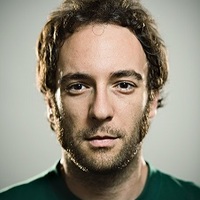Islam is the fastest growing religion in the world—a Pew Research Center report estimates that the world’s Muslim population will increase by 73 percent by 2050. As such, new Muslim communities have started to flourish in unexpected places, such as countries where the religion had few devotees until recent years. One such country is Cuba, where there are an estimated 9,000 Muslims. As photojournalist Joan Alvado explains, in the 1990s there were so few Muslims in Cuba that the initial followers were called “The Dozen.”
“They [the Muslims] are at a kind of boiling point” says Alvado. “They have to define what they will be as a community. This is a very alive moment.”
Alvado’s remarkable series documents the interaction between two worlds that, two decades ago, might not have interacted at all: Islam and the long-isolated country of Cuba. His images address this budding relationship by including elements of both spheres: in one photograph, a Muslim man, in traditional dress, walks in front of El Capitolio, the national capital building in Havana.
Interestingly, Alvado received pushback from some publications about the edit of his series: in order to publish the work, several magazines requested that he create an edit that would “prove” the series took place in Cuba. In this video interview, Alvado speaks about how he addressed his skeptics and how he worked to break visual stereotypes while still allowing his work to appeal to an international audience.
—Coralie Kraft




